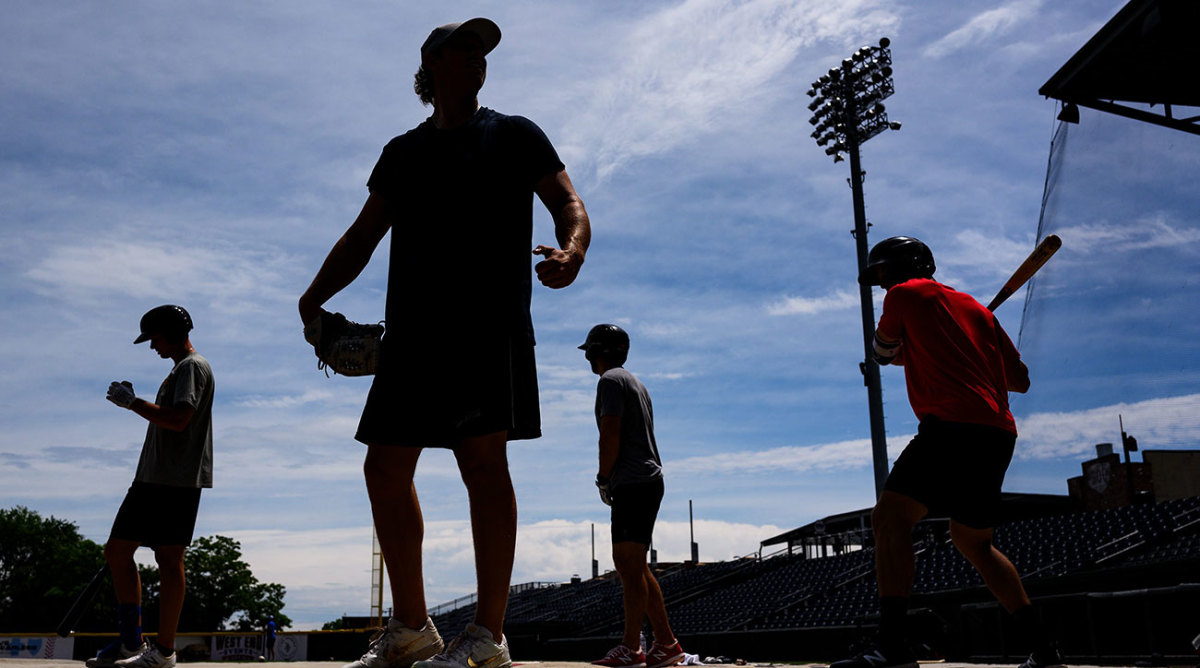

“Our goal is to keep baseball in the 160 minor league markets that we currently have.
#Minor league baseball professional#
That’s what this really comes down to, is losing access to professional baseball in markets that either aren’t close to a major league city or would like a more affordable alternative. Three Double-A teams on the cut list released statements Tuesday condemning the proposal, including Binghamton: “No one is stealing hometown American baseball from The Bing, or any other city in America, without a fight.” All four of my clubs are easily in compliance with that.” “We are trusting that they’re telling the truth when they say this is really about facilities standards, and the 25 percent - their figure - of minor league baseball parks that are not in compliance with MiLB facility standards. “We are taking Major League Baseball at its face value,” Heller told SB Nation. Three of which - Class-A Quad Cities in Iowa, short-season Class-A Lowell, Massachusetts, and rookie-level Billings, Montana - are on the cut list, though Heller expects them to still be affiliated with major league teams in 2021 and beyond.
#Minor league baseball plus#
Coleman said changes include two new video boards, replacing the playing surface, upgrading the batting cage structure, plus restrooms and concessions.ĭave Heller is the president and CEO of Main Street Baseball, a group that owns four minor league teams. In 2018, Pennsylvania Governor Tom Wolf approved a grant that included $12 million in upgrades to UPMC Park in Erie. Our facilities meet standards, so it’s not about standards.” Without having all the details, the Double-A teams on this list are likely affected because another market opened up as a result of changes in the lower minors. “The most widely speculated transition would be the Binghamton Mets going to Brooklyn, New York, because you can bring your Double-A team closer to your major league team. “The way I look at it is if they are indeed looking to eliminate the lower levels of minor league baseball, there are a couple of markets here and there to regional major league teams,” said Greg Coleman, president of the Erie SeaWolves, during an interview with SB Nation. Still, there are four Double-A teams on the cut list - Chattanooga and Jackson in the Southern League, plus Binghamton and Erie in the Eastern League. These cuts, if enacted, would essentially consolidate the affiliated minors into four levels - Triple-A, Double-A, Advanced Class-A and Class-A - plus the complex leagues at teams’ various spring training facilities. The Florida Fire Frogs, a Braves affiliate in advanced Class-A, are also on the cut list, after two straight years of dismal attendance in Kissimmee, averaging just 327 per night, roughly a quarter of the Florida State League average. The only team in the league not on the cut list is the Yankees affiliate in Pulaski, Virginia, whose 2,821 average attendance topped the Appalachian last year. The nine Appalachian League teams on the cut list averaged a collective 1,072 fans per game in 2019, including six teams averaging under 1,000. Most of these teams are at the lowest levels of affiliated teams, with 28 of the 42 teams either in rookie level or short-season Class-A ball. The New York Times on Saturday reported the 42 teams on the proposed chopping block. Cooper of Baseball America detailed a proposal from MLB that would eliminate roughly a quarter of all minor league teams. The underlying Professional Baseball Agreement that codifies the working arrangement between Major League Baseball and minor league teams expires after the 2020 season. The hard work and courage of this generation of Minor Leaguers will make our game better for players and fans alike for decades to come.The minor leagues as we know it could look wildly different after 2020, but the change won’t happen without a fight. This CBA codified significant improvements in salaries, medical benefits, retirement benefits, home and road housing/lodging, transportation, nutrition, protection for injured players, protections for released players, impartial arbitration, and fundamental due process for Players subject to investigation or discipline.

On March 31, 2023, Minor League Players overwhelmingly ratified their first Collective Bargaining Agreement. This historic step means that the MLBPA is now the sole collective bargaining representative for the 5,500 Minor League players at AAA, AA, High-A, Low-A, and Complex League levels.Īs union members, Minor League Players have been empowered with a collective voice in determining the terms and conditions of their employment.

As of August 2022, the Major League Baseball Players Association welcomed affiliated Minor League Baseball Players into our player fraternity.


 0 kommentar(er)
0 kommentar(er)
